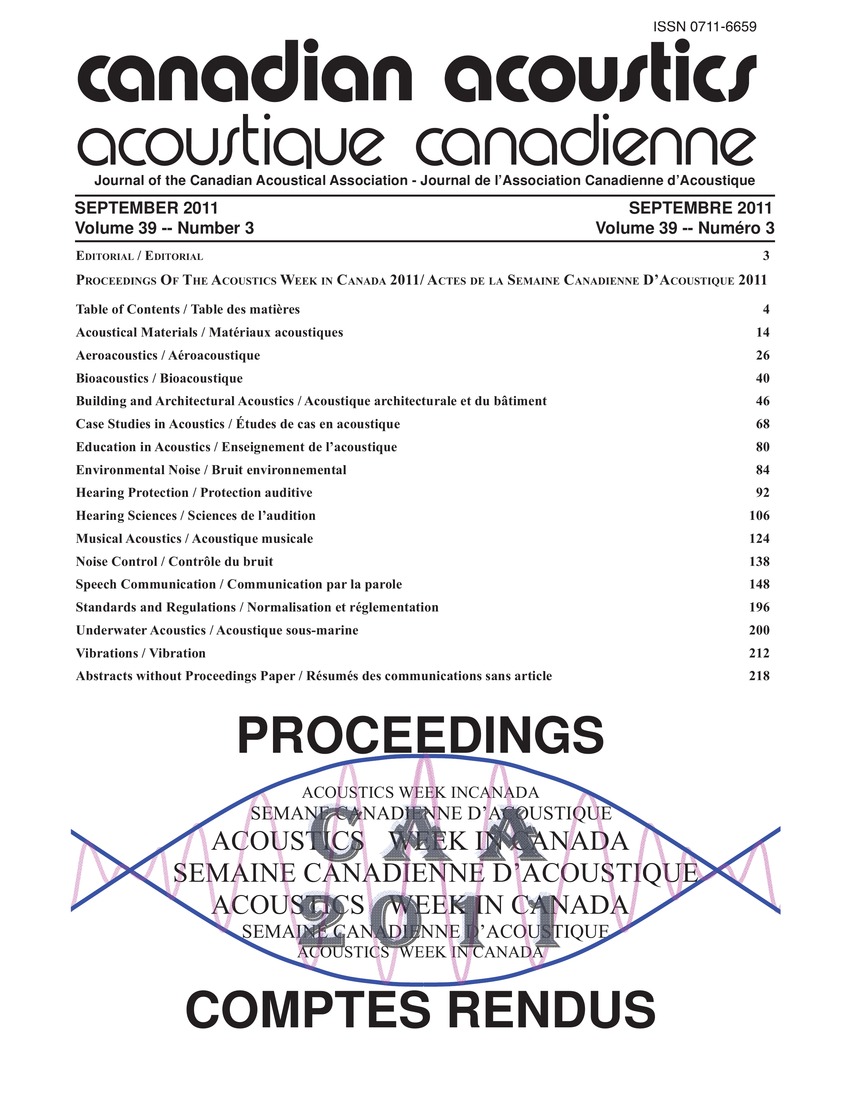Study of the compliance of a sound intensity mapping device located in space by computer vision with conventional certified methods for measuring sound power
Keywords:
Acoustic intensity, Mapping, Certified method, Machine vision algorithm, Noise source, Planar surface, Reference curves, Semi-anechoic chambers, Sound intensity measurement, Sound power, Spatial referenceAbstract
A study of the compliance of a sound intensity mapping device located in space by computer vision with conventional certified methods for measuring sound power is presented. A new real-time sound intensity mapping device, the I-Track, proposes a mean of measuring sound power that is based on sound intensity probe sweeps over planar surfaces coupled to a machine vision algorithm that associates each sound intensity measurement with coordinates in a common spatial reference. The measurements were undertaken in a semi-anechoic chamber. A calibrated source, the Acculab RSS-400, was used as a noise source. A rectangular virtual volume of 110 cm by 120 cm by 120 cm was defined symmetrically around the source in order to determine the measuring areas. Notable differences were observed between the measurements data and the reference curve of the source for sound power values over 3.15 kHz. It is still unclear why there is such divergence and this issue is under investigation.Additional Files
Published
How to Cite
Issue
Section
License
Author Licensing Addendum
This Licensing Addendum ("Addendum") is entered into between the undersigned Author(s) and Canadian Acoustics journal published by the Canadian Acoustical Association (hereinafter referred to as the "Publisher"). The Author(s) and the Publisher agree as follows:
-
Retained Rights: The Author(s) retain(s) the following rights:
- The right to reproduce, distribute, and publicly display the Work on the Author's personal website or the website of the Author's institution.
- The right to use the Work in the Author's teaching activities and presentations.
- The right to include the Work in a compilation for the Author's personal use, not for sale.
-
Grant of License: The Author(s) grant(s) to the Publisher a worldwide exclusive license to publish, reproduce, distribute, and display the Work in Canadian Acoustics and any other formats and media deemed appropriate by the Publisher.
-
Attribution: The Publisher agrees to include proper attribution to the Author(s) in all publications and reproductions of the Work.
-
No Conflict: This Addendum is intended to be in harmony with, and not in conflict with, the terms and conditions of the original agreement entered into between the Author(s) and the Publisher.
-
Copyright Clause: Copyright on articles is held by the Author(s). The corresponding Author has the right to grant on behalf of all Authors and does grant on behalf of all Authors, a worldwide exclusive license to the Publisher and its licensees in perpetuity, in all forms, formats, and media (whether known now or created in the future), including but not limited to the rights to publish, reproduce, distribute, display, store, translate, create adaptations, reprints, include within collections, and create summaries, extracts, and/or abstracts of the Contribution.


